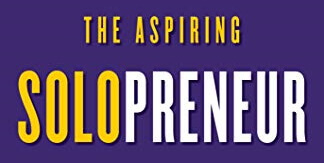Over the last couple posts, we’ve been delving into some of the very real, but rarely discussed, challenges for senior leaders. We moved on to talk about our initial conversations and meetings, as well as the role I play as a trusted advisor and collaborator. This week, we’ll review what a typical engagement looks like and the method to my madness. We’ll also touch on my approach to contracts and the value I see in not using them. My hope is that you’ll find a few nuggets in these posts that will help you solve challenges you may be facing.
Initially, we’ll (ideally) meet face to face or via video conference. There’s no cost associated with this meeting except for both of our time. The three objectives of our meeting are to determine:
- What are the current challenges the CEO needs assistance with?
- Is there a specific issue?
- Are things great and they simply want to maximize results?
- Do they need help in achieving a fitting work-life balance?
- Do they need a trusted sounding board?
- Are they stuck and need a collaborator?
- Does the CEO feel that I’m (Kris) a good fit?
- Do our personalities mesh?
- Does s/he feel my skillset is the appropriate complement to theirs?
- Can I help them solve their issue(s)?
- Do I (Kris) feel we’re a good fit and can I genuinely help them?
- Is there a real connection?
- Is this a person I like and want to spend time with?
- Are they ready for help?
- Are they ready to be challenged and pushed?
This is all achieved through a simple conversation that usually takes one to two hours, which is the initial groundwork for a relationship. I know that to be truly effective my clients, they have to unequivocally trust me, which is why having a good connection is the cornerstone. To quote Patrick Lencioni, “Without trust, you can’t have conflict, and without conflict, it is difficult to have real commitment and clear accountability.” All of which impacts results. Every quality relationship – from business to personal – has a foundation built on trust. This is the primary reason I don’t charge for this initial session. I need to first make sure we’re a good mutual fit. I “go all in” with my advisory clients and will do whatever I can to help them become great.
During our conversation, we’ll also discuss my role in this process and we’ll ensure we’re on the same page. In most cases, becoming a confidant and trusted advisor is very different than acting as a coach. I’ve done a ton of coaching in the past and fully embrace it. I believe that the art of coaching is to act primarily as a facilitator and teacher for the individual; to help others work through issues and discover their own path by encouraging them to figure it out and pull from within. In other words, the client has the answers and it’s the duty of the coach to assist the individual with discovering possible solutions. In addition, a coach will often provide tips and tools for the individual to improve upon the process or their skillset. However, a great coach will rarely be the collaborator helping to move issues forward, and rarely will a coach be thinking about how to solve a problem when off the clock.
As an advisor, I believe my role is threefold:
- Objective sounding board
- Offers a confidential, impartial, independent, and candid perspective
- Provokes out-of-the-box thinking and identifies alternative options
- Pinpoints blind spots and issues; creates paths to solve them
- Lives outside the box; is able to lend new perspectives and insights
- Collaborator
- Participates in the problem-solving process
- Pushes traditional thinking and possibilities
- Assists with CEO assessment and the development of key personnel
- Acts as an accountability partner to ensure teams stay on track
- Coach/teacher
- Identifies personal and key team member development needs
- Teaches and coaches on specific tools needed to achieve development
- Defines personal success and balance; creates and implements a plan to achieve it
- Refines and grows leadership/management training skills
This can be a tightrope for me. I find that as long as I clarify the expectations during our discussion, it works well. As an example, I’ll say something like, “Now, I’m putting on my collaborative hat. Do you want my thoughts?” This is always well-received and clients seem to understand the reasons for my approach.
I have friends who are very successful coaches and who want to know why I desire taking a more engaged approach. The answer is simple: I have 30+ years of entrepreneurial experience, have worked with hundreds of businesses and individuals, and I see things differently. I believe that in the right cases, there’s huge potential value in collaboration.
Next week, we’ll discuss what a typical engagement with me as strategic advisor looks like and talk about my philosophy towards contracts and ongoing engagements.
If you’re a business owner, CEO, president, or chairman of the board, and you’d like to see if we may be a fit, I’d be humbled to have the opportunity to speak with you and to provide you with an hour of time to explore where we could go.




